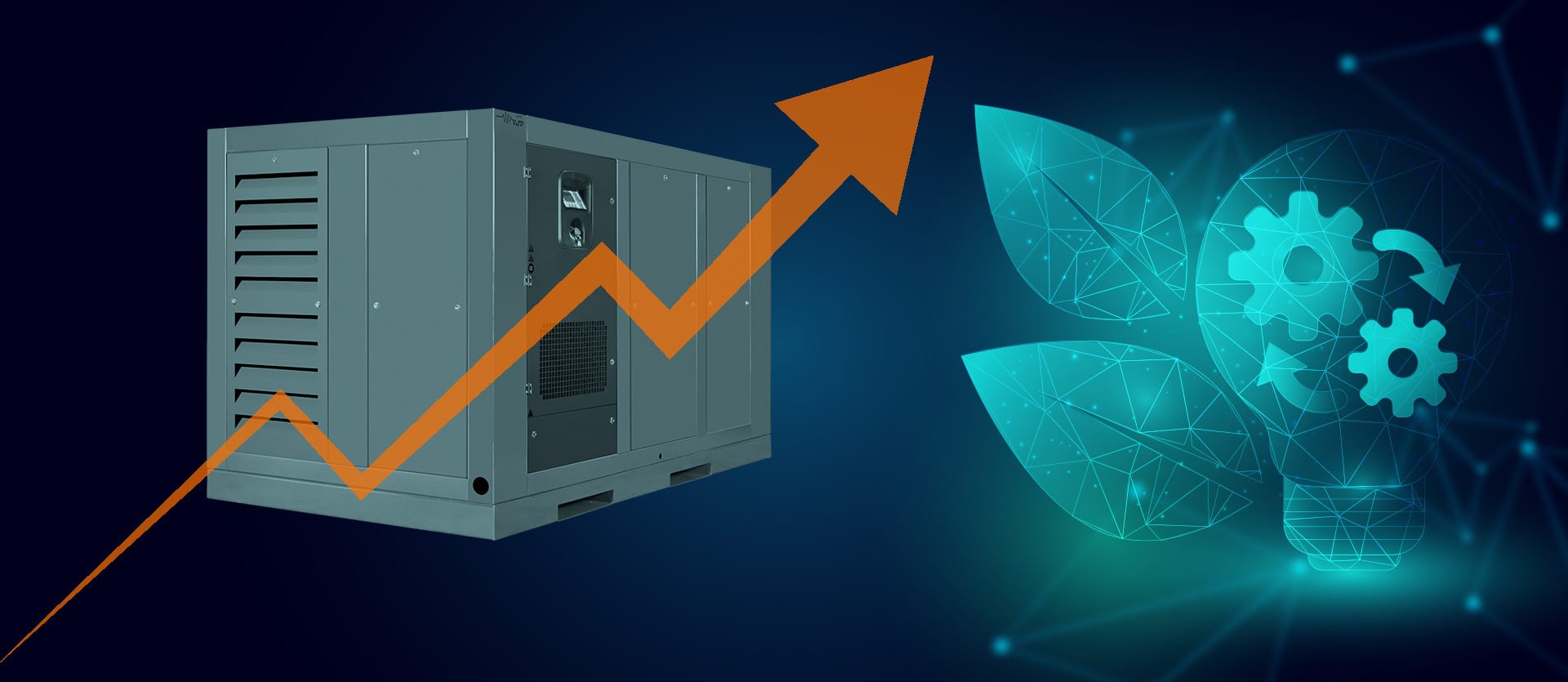How Can I Increase The Efficiency Of My Compressor?
29 November 2021, Monday

Efficiency is a matter that is on all enterprises’ agenda today and is increasing in importance every passing day. Energy efficiency has become one of the first agenda topics of the enterprises, with the direct effect of energy use on the costs of production and the damage caused by energy loss to the enterprise and the environment. When the efficiency matter is evaluated from the point of the compressors, it is observed that a compressor operating inefficiently increases energy costs and also affects the manufacturing processes due to the loss experienced. So, what can you do as a business about saving on energy?

Factors that Affect Efficiency
One of the most affecting factors on compressor efficiency is the compressor outlet pressure. When the compressors are operated with a pressure higher than the pressure suitable for their design, the energy efficiency of the devices begins to decrease. In order to reduce the pressure losses in the system in compressors with compressed air production, the reason that increases the air consumption should be revealed. The factor that causes an increase in air consumption by restricting the air flow may be blockages in the dryer, exchanger, or filters. It is important to make filter and oil changes on time. After the problem with the device restricting the air flow is solved, the air volume returns to normal. Thus, a more efficient result is obtained as the compressor operates at the required pressure.
In order to detect the applicable power saving methods, the compressed air system inventory and operating parameters need to be collected. Indicators of the compressor system performance in the view of the obtained data: Specific power, annual energy cost, compressed air cost, air leaks and pressure decrease can be calculated or estimated.
When devising the compressed air distribution system, attention should be paid to the selection of appropriate pipe diameters and the application of loop distribution system where possible. By checking whether the pressure levels at the air inlet points of the equipment operating with compressed air are sufficient or not, it should be ensured that the detection of pressure losses, which can reach 2-3 bar in some cases, between the distribution system and the air tools due to intermediate equipment such as insufficient size devised air lines, quick couplings, filters, regulators, and lubricators, and taking the preventive measures for these losses should be taken. Thus, high pressure differences can be hindered, and maximum efficiency can be achieved.
Selecting the pressure regulator, lubricators, air hoses and interconnecting equipment according to the possible lowest pressure decrease and the best performance criteria and sizing this equipment according to the actual flow rate values rather than the average flow rate increases the system efficiency significantly. Larger size couplings cause lower pressure losses. For example, the pressure decrease occurred in the 1/4” quick coupling is approximately 83% less than in the 1/8” quick coupling.

Operating the compressor at higher pressure than normal will cause failures in the long term. Therefore, the long-term maintenance costs can be reduced by eliminating the pressure losses in the system. A series of applications such as using a flow rate controller, turning off the devices that draw air when not in use, using efficient hose nozzles are also small but important measures that increase the compressor efficiency.
A dryer operating inefficient holds great amount of air in it and reduces the overall efficiency of the system drastically. Even though replacing your former dryer operating inefficient may seem like an extra cost at first glance, the productivity growth will easily cover this cost. Air tanks are another factor that directly affects the compressor efficiency and power saving. Preferring a tank that is placed close to the compressor and slightly larger than the calculated need makes significant contributions to compensation of the system pressure and meeting sudden demand increases.
In addition to the economic effect, reducing the compressed air losses is also beneficial for the environment. Reducing losses also reduces the demand for energy generation, so that less CO2 and other harmful components are released into the atmosphere. The electrical energy consumption of a compressor during one year of continuous operation is generally more than the initial investment cost.
